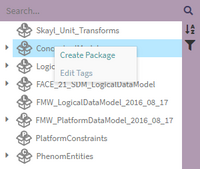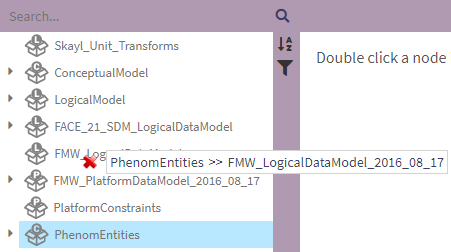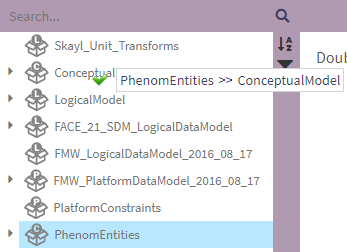Package: Difference between revisions
No edit summary |
|
(No difference)
| |
Latest revision as of 14:36, 26 September 2022
A Primer on Packages
Packages function like folders that help users organize elements of the project. Each package has a type:
- Conceptual
- Logical
- Platform
- Service (UoP)
- Integration
- Deployment
The type of the package limits the scope of elements it can contain: Conceptual packages can contain only Observables, Entities, and Associations; Logical packages can contain only Measurements, Measurement Systems, Coordinate Systems...; etc. Each package may also contain additional packages of its own type, with the exception of the root level which includes packages of all types.
Creating a Package
To create a package, the user needs to either select the corresponding option in the Create dropdown menu or right-click on a package in the NavTree.
The user needs fill in the Package's name (which must be unique) and description.
If the user right-clicked on a package from the NavTree, the type and parent package will be pre-filled with the selected package. If not, the user needs to select a type which will filter the parent package list.
Using the NavTree on the left, packages are structured and navigated just like file folders. In order to expand or collapse a given package, left-click on the caret icon. Packages may be nested many levels deep.
Packages can be moved and reordered simply by drag-and-drop interaction in the NavTree. While dragging a folder to a new location, the NavTree will show either a green checkmark (indicating that this is a valid place to drop) or a red x (indicated that this is an invalid place to drop). As described above, a package must be dropped on a package of the same type.



